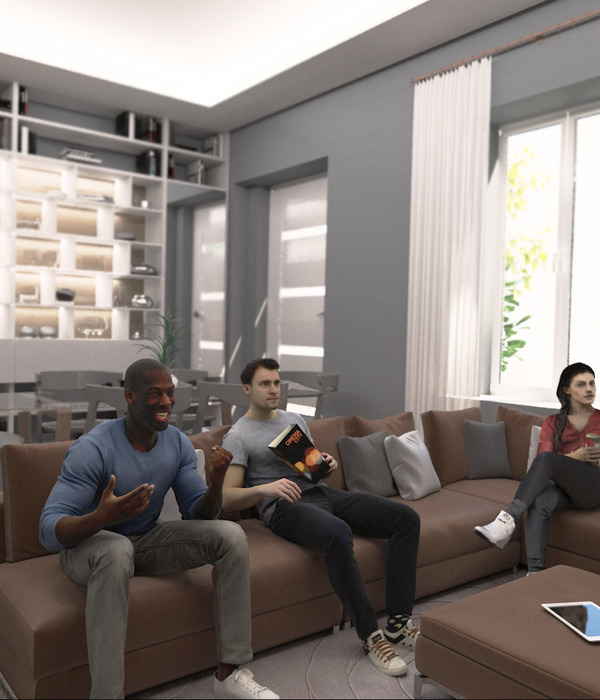Architects:Bureau de Change Architects
Area:420 m²
Year:2023
Photographs:Gilbert McCarragher
Main Contractor:PRS Builders
Structural Engineering:Blue Engineering
M&E Engineering:MWL Consulting
City: London
Country: United Kingdom
Cast House is a new-build detached house in a suburban street in Clapham, south London. The house shares the visual language of the pattern-book brick 1930s houses, but it is designed in a contemporary idiom offering a distinct proposition.
The house borrows motifs from the surrounding neighborhood to offer a contemporary interpretation of London’s suburbs. Precast concrete details have been used to echo the local 1930s architectural language, and stacking concrete volumes at ground, first floor and roof level open the house up to a relandscaped garden to the rear.
The neighborhood is characterized by gable roofs, bay windows, tiered materiality, and open porch entrances. Cast House combines these motifs in a composition of London stock brick and precast concrete, marrying bay windows with a recessed entrance porch.
The entrance elevation is sensitively designed so that the house sits discreetly among its heritage neighbors, playfully responding to the established rhythm of the street. The rear façade is bolder in its design, presented as a cascading sequence of tiered cubic volumes which project out into the garden and a sunken patio. The two elevations are unified by a clear design rationale and a sparing palette of materials, with brick and concrete interlocking throughout.
Bureau de Change has cleverly designed a generous 420m2 four-story house within the footprint and height parameters of the original house by excavating one level below and creating a fifth bedroom as an attic room with a dormer window.
On the rear elevation, the floors project out as volumetric boxes, with each room opening onto a private terrace overlooking the stepped terraces of the garden, bringing generous light into the interior.
The design seeks to emulate the lasting quality and craftsmanship of the 1930s housing whilst reducing the embodied energy of the build. The precast panels contain a high content of ground granulated blast-furnace slag (GGBS), a cement substitute, which reduces the amount of embodied CO2 and yields a whitewash feel to the concrete. The softer, variegated texture of the concrete has been achieved through the use of additional molds at the rear, with the imprints of the bricks, and revealing the aggregate on the window sills and planters by grinding the timber.
Emphasizing the craftsmanship of the build, the concrete volumes are detailed with a framing lintel. In the street elevation the brick volumes are edged with interlocking brick corners, cut at an angle to create a rhythmic pattern along the vertical edges, a pattern which is inverted in the concrete plinth below.
The inset brick detail gives the impression that the concrete volumes have been pushed into an existing façade, creating a distinction between active and passive volumes, receding and projecting elements, and the contrast of brick and cast concrete, which emphasizes the volumetric gesture.
Inside, an azure blue suspended stair with vertical railings connects all levels and leads you to the belly of the building, orientating you to the stepped garden terrace where you ascend into the light. The terrace unifies the garden and house, linked by the concrete staircase flanked by cubic volumes which accommodate planters and an open hearth for outdoor cooking.
The construction follows passive house principles and includes two air source heat pumps (ASHP) and a mechanical ventilation heat recovery system (MVHR).
{{item.text_origin}}












